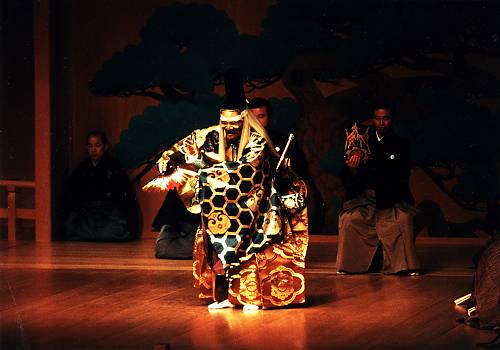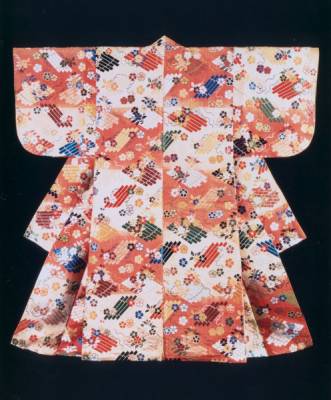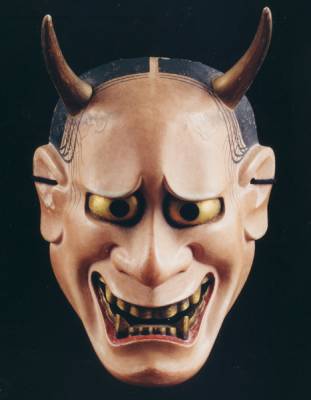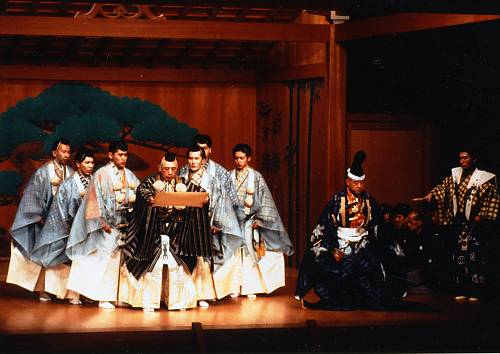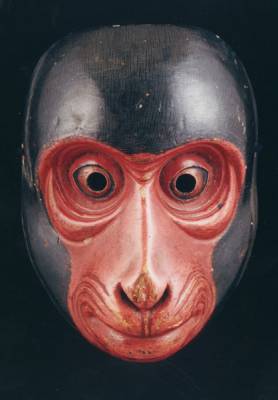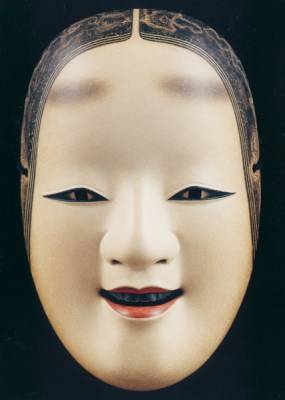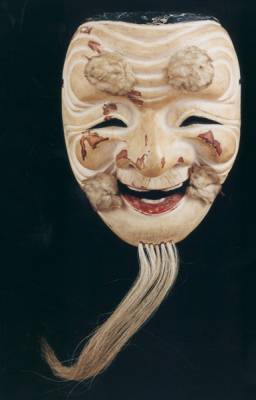Nôgaku theatre
Inscribed in 2008 (3.COM) on the Representative List of the Intangible Cultural Heritage of Humanity (originally proclaimed in 2001)
Nôgaku theatre had its heyday in the fourteenth and fifteenth centuries, but actually originated in the eighth century when the Sangaku was transmitted from China to Japan. At the time, the term Sangaku referred to various types of performance featuring acrobats, song and dance as well as comic sketches. Its subsequent adaption to Japanese society led to its assimilation of other traditional art forms. Today, Nôgaku is the principal form of Japanese theatre and has influenced the puppet theatre as well as Kabuki.
Often based on tales from traditional literature, Nôgaku theatre integrates masks, costumes and various props in a dance-based performance. Moreover, this theatre requires highly trained actors and musicians. Nôgaku encompasses two types of theatre: Noh and Kyôgen, which are performed in the same space. The stage projects into the audience and is linked by a walkway to a “hall of mirrors” backstage. In Noh, emotions are represented by stylised conventional gestures. The hero is often a supernatural being who takes on human form to narrate a story. The distinctive masks for which Noh is renowned are used for the roles of ghosts, women, children and old people. Kyôgen, on the other hand, relies less on the use of masks and is derived from the humorous plays of the Sangaku, as reflected in its comic dialogue. The text is written in ancient language and vividly describes the ordinary people of the twelfth to sixteenth centuries.
In 1957 the Japanese Government designated Nôgaku as an Important Intangible Cultural Property, which affords a degree of legal protection to the tradition as well as its most accomplished practitioners. The National Noh Theatre was founded in 1983 and stages regular performances. It also organizes courses to train actors in the leading roles of the Nôgaku.

